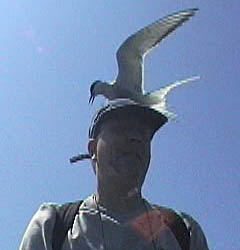So why would anyone take 3 (or more) photographs of their alarm clock 15 minutes before midnight?
One too dark, one too bright and one 'just right'.
At one level the answer is Paul Hobson and his excellent book Wildlife Photography Field Skills and Techniques. At another the answer is this …….
Have you got it? The phone picture is a glow worm larva, which I saw crossing one of the local roads back in May. Scroll forward to July and on our usual late evening (post sunset) dog walk on a different track we saw a glow worm, and then a couple of nights later 4 glow worms, frustratingly all tucked well into clumps of grass, and not snappable without more environmental tinkering than I could justify for the sake of a picture.
Then I remembered the glow worm larva and nipped down to that site, to find another 4 shining away, 2 of which were in more open but less photogenic spots. It was late and I had work the next day, but I headed home to grab the camera. But how to snap them? That's where Paul's book came in as I remembered a section on glow worms in that. Bit of a practise on the alarm clock and down to the worms, where I again ended up doing the Goldilocks too dark, too bright and just right exposures.
Not the best backgrounds but a chance to practise in the field - quickly.Still the best ones hidden down in the grass.
Over the next week I tried a few more times - still not great backgrounds and once the glow just wasn't working so well. It was only later I realised that was because the females both had males attached! These are long exposures (4-8 seconds) so a bit of blur on the male. Over exposed to show the males.
Finally back on the original track I got a chance to try snaps with some more exposed worms on 'better' backgrounds. The first shows how they hold their tails to shine the light skywards
and this last has had more post processing done, but gives an idea of just what the beetles look like.
All too soon the season was over, but next year I will have retired so no concern about work. Mind you I wouldn't want to spend too long on any one individual - after all they are trying to mate.
And what's the recommended technique …………………. I suggest you buy Paul's book! Available on Amazon or direct from Paul here.
Friday, August 31, 2018
Subscribe to:
Posts (Atom)
























